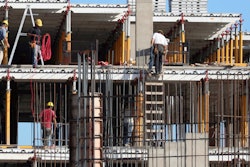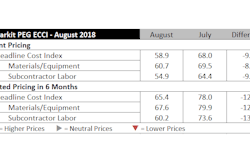
Hourly earnings in the industry averaged $30.28 in November, an increase of 3.7% from a year earlier. Average hourly earnings in construction are now 10.7% higher than the average for all nonfarm private-sector jobs, which rose 3.1% in the past year, to $27.35.
Construction employment increased by 5,000 jobs in November and by 282,000 jobs over the past year while the industry’s unemployment decreased to a historic low, according to an Associated General Contractors of America analysis of new government data. Association officials called on public officials to enhance career training and education and employment-based immigration reform to ensure an adequate supply of qualified workers.
“Demand for construction remains strong and pay is rising faster than in the overall economy,” said Ken Simonson, the association’s chief economist. “But contractors are having increasing difficulty finding qualified workers as industry unemployment slides to historic lows.”
Construction employment totaled 7,312,000 in November, a gain of 4% over the past 12 months. Employment in residential construction — comprising residential building and specialty trade contractors — grew by 7,900 jobs for the month and 127,900 jobs over the past 12 months, a 4.7% increase. Employment in nonresidential construction — including building, specialty trades, and heavy and civil engineering construction — inched down by 3,600 jobs in November and grew by 154,100 jobs during the past year, a 3.6% increase, the economist remarked.
Meanwhile, the unemployment rate for jobseekers with construction experience in November was 3.9%, down more than a percentage point from 5% in November 2017. The number of such workers fell to 375,000 from 467,000 a year earlier. Both figures were the lowest for November since the series began in 2000, Simonson noted.
In a survey the association released in August, 80% of construction firms were having trouble hiring hourly crafts workers and 81% expected that hiring would remain difficult or become harder. In response, association officials put forward a plan that would increase funding to career and technical education and reform immigration.
“Demand for new construction is rising faster than construction firms can add skilled personnel,” said Stephen E. Sandherr, the association’s chief executive officer. “In order to have a skilled workforce and build America, federal officials should invest in career training and push for commonsense immigration reform.”
















